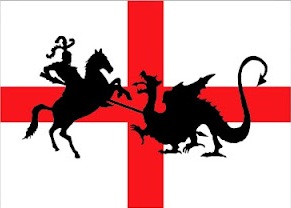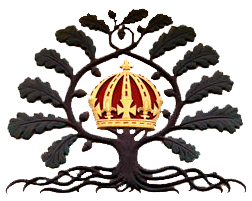How Lutheran Was the English Reformation?
 Embryo Parson Posted on
Embryo Parson Posted on  Thursday, February 28, 2013 at 12:26AM
Thursday, February 28, 2013 at 12:26AM Helpful essay here. The conclusion:
Historians seem to agree that the Lutheran influence that was dominant in the early Reformation in England diminished beginning with Edward but was not lost. McGoldrick writes by way of conclusion:
In appraising the enduring influence of Lutheran concepts in England, one must travel the paths first walked by Barnes and Tyndale. True, no English denomination of great size was to call itself the Lutheran Church, but the doctrinal content of Anglican theology bears unmistakable evidences of Lutheran teachings (p 200).
Referring to the Zwinglian and Calvinistic ideas that gained a large following during the reigns of Edward VI and Elizabeth I he says: “The foundations of Anglican Protestantism, however, had been laid by an earlier generation of reformers, and prominent among them were the two men who represented Luther’s English connection, Robert Barnes and William Tyndale” (p 200).
Tjernagel also sees permanent Lutheran elements in the Anglican Church. He writes:
The Lutheran imprint of the reign of Henry VIII has remained a permanent stamp on English theology. Save for the admittedly important doctrine of the Lord’s Supper, the Forty-two Articles of the reign of Edward VI and the Thirty nine Articles of the Elizabethan settlement were and remain Lutheran. . . . The Lutheran imprint is also clearly impressed on the Book of Common Prayer and the form of Anglican worship. Unlike the Reformed churches, which tended toward iconoclasm and puritan regimentation, the Anglican Church followed the policy of Martin Luther in retaining as much of ancient religious practice and ceremonial as was compatible with a Scriptural theology. Like the Lutheran Reformers, Thomas Cranmer and his heirs combined music and a polished vernacular prose style to achieve new heights of grandeur in the service of God in worship (p 252f).
James Atkinson, the English historian of the Reformation period, agrees. Repeatedly he refers to Lutheran influences that have endured. Tracing the development of the Thirty-nine Articles to the time of Elizabeth, his comments are:
Elizabeth sought not to conciliate Rome but to unite the Protestants in England, and this on a Lutheran basis, the doctrine of Holy Communion excepted. When she retained crosses and candles in her own chapel it was not to conciliate Romanists but to maintain herself under the aegis of the Peace of Augsburg. . . (p 242).
Philip Schaff in his Creeds of Christendom, acknowledging that Germany gave to England the first impulse of the evangelical Reformation,” (I, 600), however concludes: “It is not too much to say that the ruling theology of the Church of England in the latter half of the sixteenth and the beginning of the seventeenth century was Calvinistic” (I, 604.). If we make the view on the Lord’s Supper the major criterion in judging between what is Calvinistic and what is Lutheran (and for Luther this was extremely important), we will agree with Schaff. At the same time, a Lutheran reading the Thirty-nine Articles will recognize many phrases and sentences that derive from the Augsburg Confession.
How Lutheran was the English Reformation? In its early years, primarily during the reign of Henry VIII, the people working for reform were looking to Wittenberg and listening to Luther. Barnes, whose influence was doctrinal, was a student at Wittenberg and brought Lutheran doctrine to England. Tyndale, the translator of the Bible, translated in Wittenberg and Germany under Luther’s influence. Cranmer had close associations in Lutheran Germany and followed Lutheran principles in liturgy and worship. The English church could have become a Lutheran church.
What was the end result? The exiles that came to England during Edward’s reign and that went to the continent during Mary’s reign represent strong Calvinistic influence. Cranmer, more like Melanchthon in being given to compromise and not a confessor like Luther, became a Calvinist in his doctrine of the Lord’s Supper while retaining Lutheran liturgical principles. In the Elizabethan Settlement the Anglican Church retained enough of what England’s early reformers had given it that it is not surprising that someone coming from an Episcopal church can feel comfortable in a Lutheran liturgical service.





Reader Comments (1)
Good stuff.